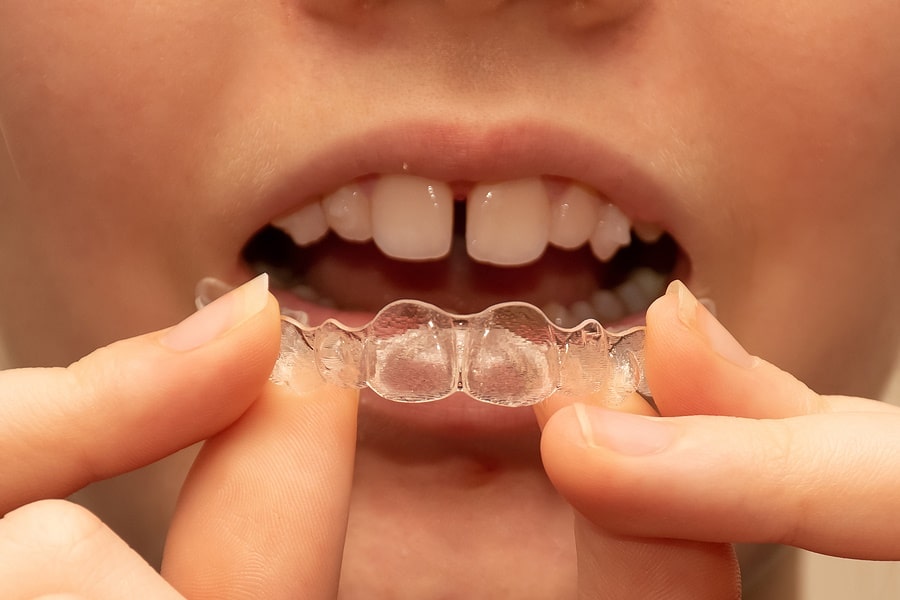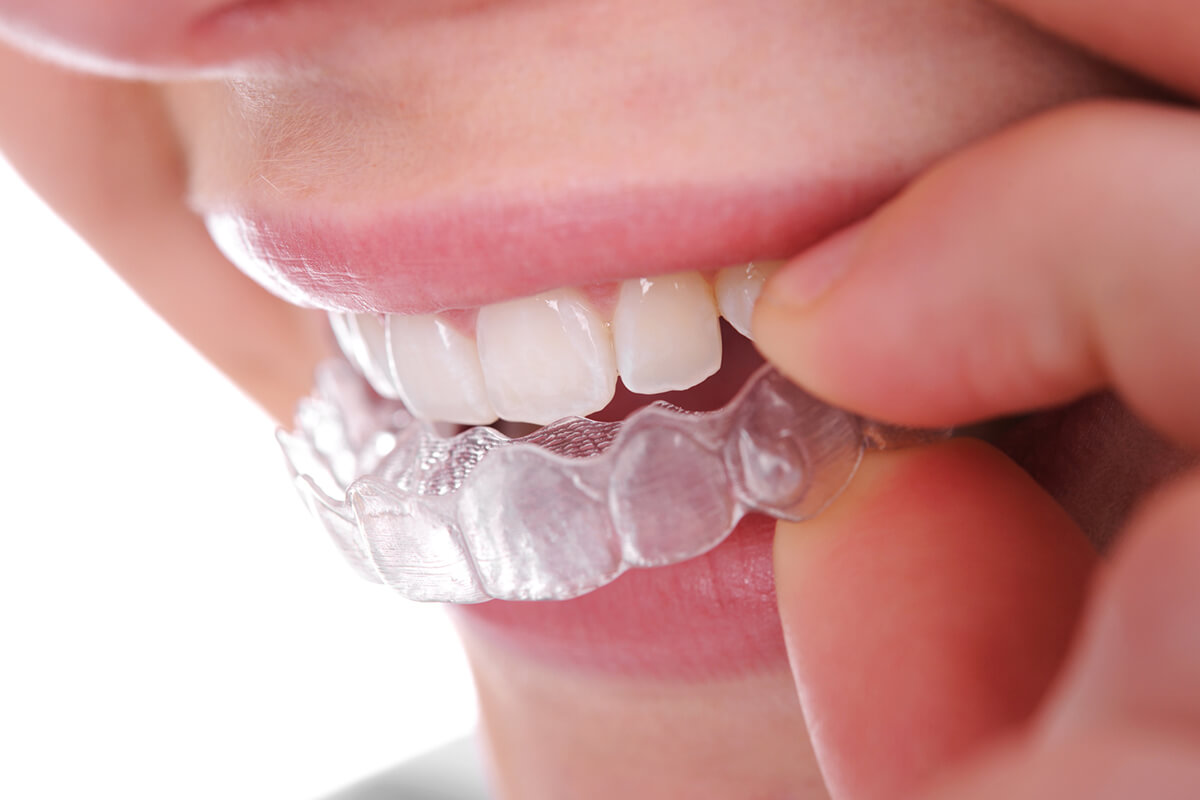How Invisalign Functions: Your Guide to Clear Aligners and Their Effectiveness
How Invisalign Functions: Your Guide to Clear Aligners and Their Effectiveness
Blog Article
Invisalign vs. Typical Braces: Which Option Is Right for You?
When taking into consideration orthodontic treatment, the choice in between Invisalign and standard dental braces provides numerous essential factors that merit careful analysis. Invisalign uses a very discreet alternative with detachable aligners, while traditional dental braces offer a much more noticeable yet effective service for extreme misalignment.
Overview of Treatment Choices

In comparison, conventional braces contain steel brackets and cables that are bonded to the teeth. This approach applies continual stress in time to achieve placement. While efficient for complicated orthodontic concerns, conventional dental braces need normal gos to for changes and can position difficulties in maintaining dental health as a result of the difficulty of cleaning about braces and wires.
Both alternatives have their merits, and the option commonly pivots on specific dental conditions, way of life choices, and patient conformity. Ultimately, speaking with an orthodontic specialist is important for establishing one of the most ideal therapy strategy customized to specific requirements. Understanding the subtleties of each choice can considerably affect the total success of orthodontic treatment.
Visual Considerations
A significant aspect affecting the option in between Invisalign and typical dental braces is the visual charm each therapy supplies. Invisalign aligners are crafted from clear plastic, making them virtually undetectable when worn.
On the other hand, typical braces consist of steel braces and wires, which can be much more obvious. While developments in orthodontic modern technology have led to the advancement of smaller braces and tinted elastics, conventional braces still keep a more noticeable profile. For some individuals, the presence of dental braces might prevent them from looking for essential treatment.
Ultimately, the option in between Invisalign and conventional braces might rest on personal preferences pertaining to looks. Individuals that focus on discretion typically lean towards Invisalign, while those that are less concerned about visibility may go with traditional braces. Comprehending the aesthetic ramifications of each option is essential for making a notified decision that aligns with one's way of life and preferences.
Convenience and Convenience

In terms of comfort, Invisalign aligners are removable, making it possible for people to enjoy their favorite foods without constraint and maintain ideal dental health. Brushing and flossing are streamlined, as the aligners can be secured throughout these routines, whereas standard braces call for cautious maneuvering around braces and wires.
Additionally, Invisalign's progressive system permits fewer orthodontic visits. Individuals typically get multiple collections of aligners simultaneously, which can enhance the treatment process and minimize time invested in the orthodontist's chair. On the other hand, typical dental braces necessitate routine adjustments, making them less hassle-free for those with busy timetables. Invisalign. Generally, the comfort and ease of Invisalign make it an appealing option for numerous people looking for orthodontic therapy.
Treatment Period and Performance
While both Invisalign and traditional braces are effective in fixing oral imbalances, the duration of therapy can differ substantially in between the two choices. Commonly, Invisalign treatment can take anywhere from 12 to 18 months, relying on the intricacy of the situation. The clear aligners function by progressively shifting teeth into their desired settings, and regular follow-ups with an orthodontist help guarantee progression stays on track.
On the other hand, conventional dental braces frequently require click site a longer commitment, usually varying from 18 months to 3 years. This results from their set nature and using wires and braces, which can be a lot more efficient for severe imbalances and complicated cases (Invisalign). The treatment performance of conventional braces is well-documented, as they permit accurate changes and higher control over tooth motion
Inevitably, the choice between Invisalign and standard braces may pivot on both the expected treatment duration and the particular oral concerns handy. Consulting with an orthodontist is essential, as they can provide customized recommendations based on specific requirements, guaranteeing the selected approach lines up with wanted durations and results.
Cost Contrast and Insurance Policy Options
Cost plays a considerable role in the decision-making procedure for people considering orthodontic therapy, whether choosing Invisalign or traditional braces. Usually, the price of Invisalign ranges from $3,000 to $8,000, while traditional dental braces typically set you back between $2,000 and $6,000. Elements influencing these expenses include the intricacy of the case, the duration of therapy, and geographical place.
Insurance policy coverage can considerably affect out-of-pocket expenses. Several oral insurance plans give partial protection for orthodontic treatments, yet the specifics can differ commonly. It is crucial for individuals to review their insurance coverage to determine the extent of protection for either choice. Usually, typical braces might be extra often covered by insurance plans compared to Invisalign, which some insurers classify as an aesthetic procedure.
Additionally, a number of orthodontic practices supply versatile payment strategies, making both therapy choices a lot more check over here obtainable. Clients need to make inquiries concerning potential financing options and price cuts for ahead of time payments. Assessing the total expense, consisting of insurance policy advantages and settlement strategies, is vital for making an educated choice that aligns with both aesthetic preferences and budget plan factors to consider.

Final Thought
In recap, the choice between Invisalign and typical dental braces rests on several variables, including visual preferences, comfort, treatment period, and price. Invisalign uses a discreet, removable choice that assists in oral hygiene and nutritional adaptability, while conventional dental braces might be better for complicated dental issues and commonly come with a lower price factor. Ultimately, consultation with an orthodontist is necessary to assess specific circumstances and identify the most ideal therapy choice for achieving ideal dental alignment.
When thinking about orthodontic therapy, the choice in between Invisalign More Bonuses and conventional dental braces provides several crucial aspects that merit mindful analysis.Contrasting Invisalign and standard braces exposes distinct treatment alternatives for orthodontic improvement.While both Invisalign and traditional braces are efficient in dealing with oral imbalances, the period of therapy can vary dramatically in between the 2 choices.Price plays a substantial function in the decision-making process for individuals taking into consideration orthodontic treatment, whether choosing for Invisalign or conventional braces.In summary, the choice between Invisalign and traditional braces pivots on several elements, including visual preferences, convenience, treatment duration, and expense.
Report this page